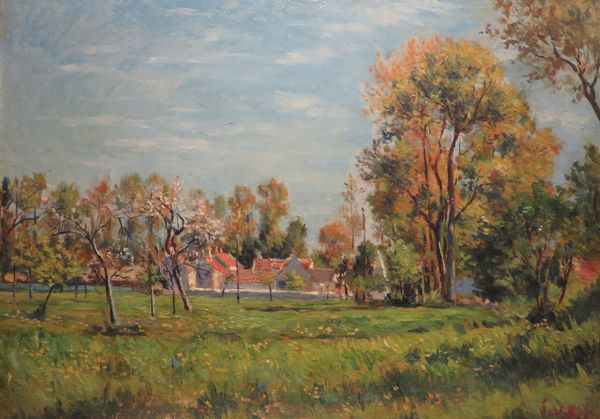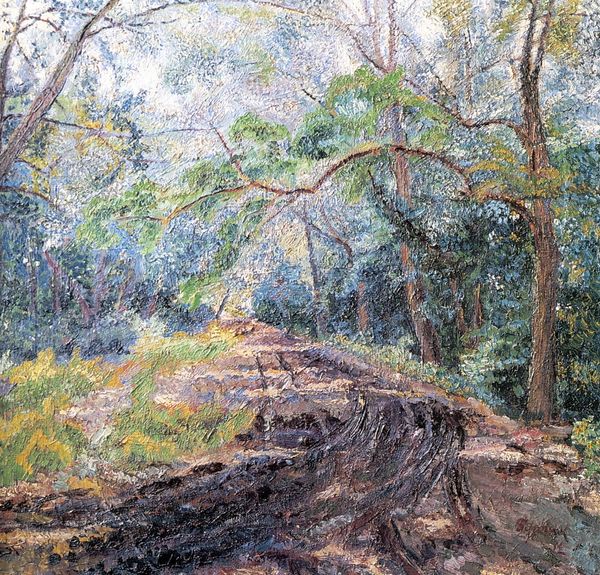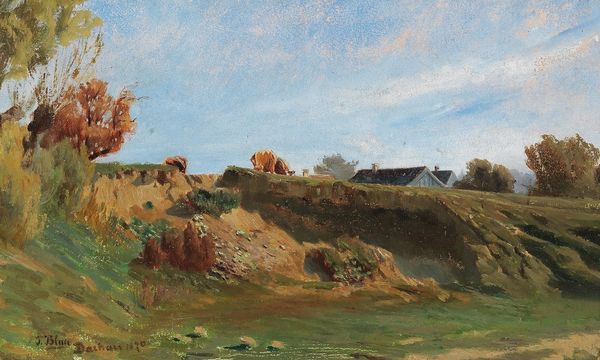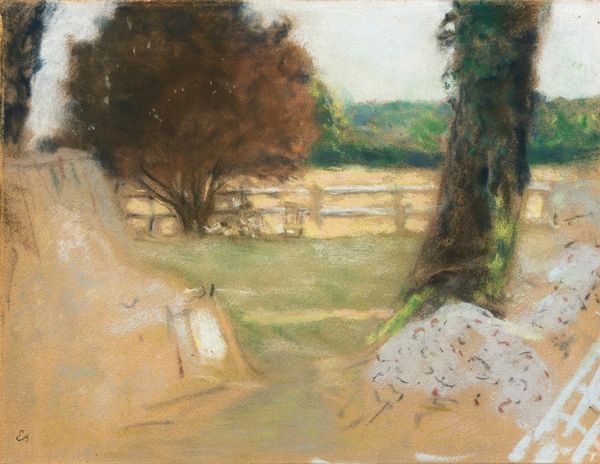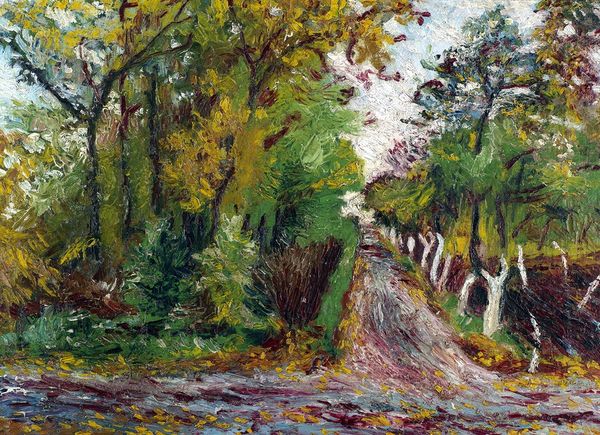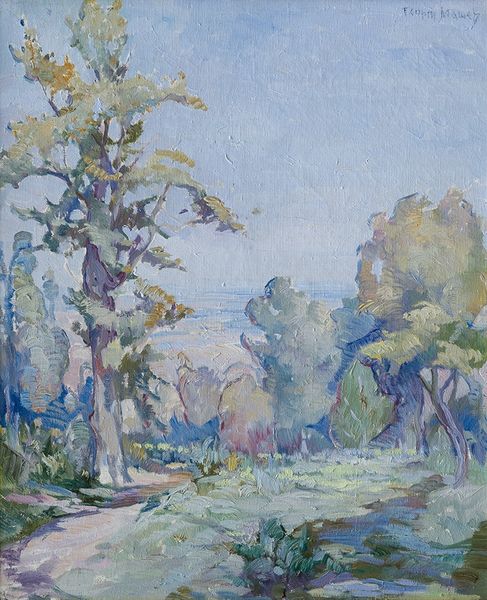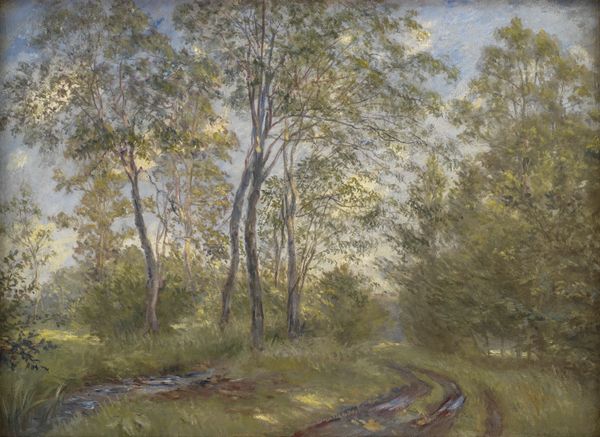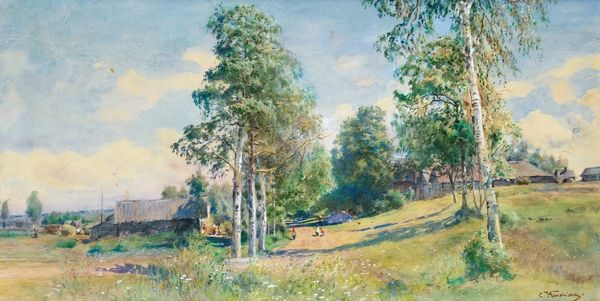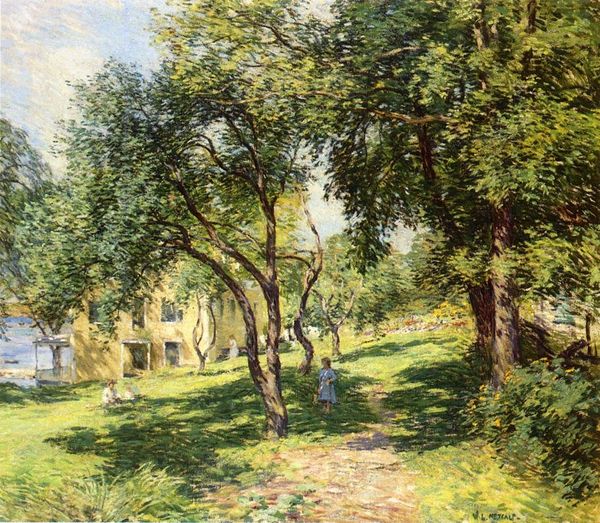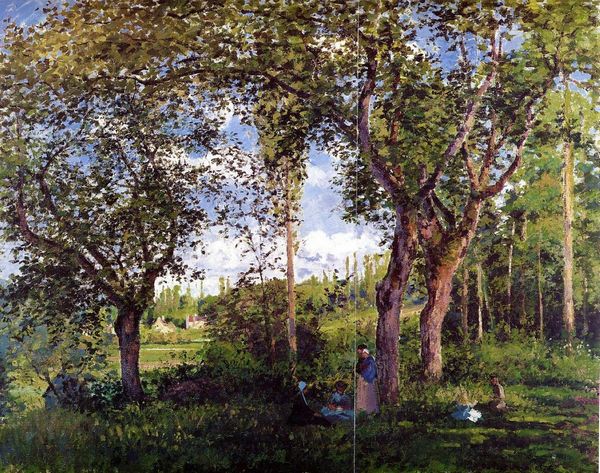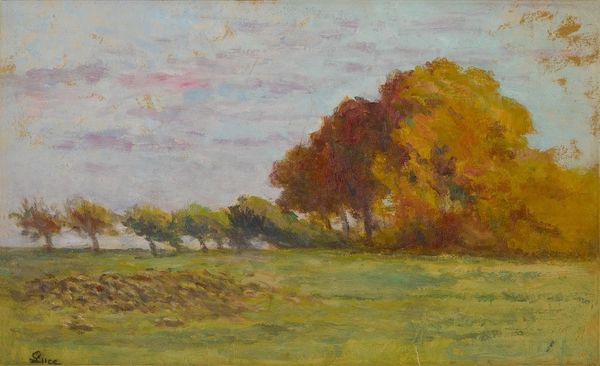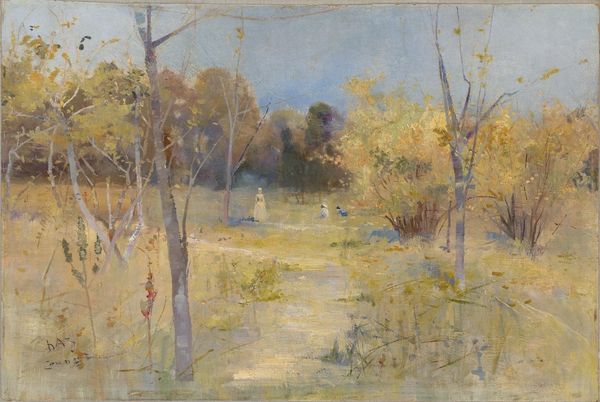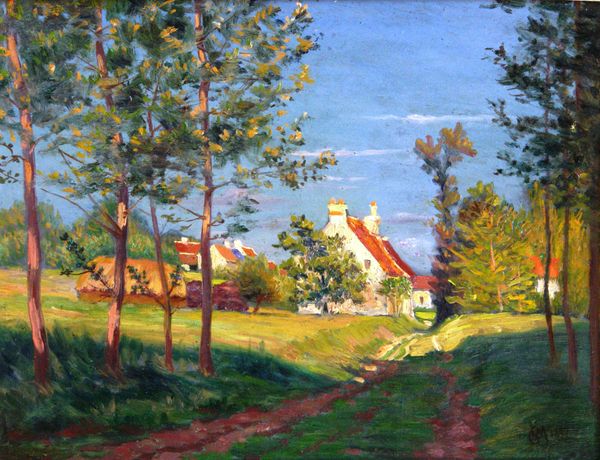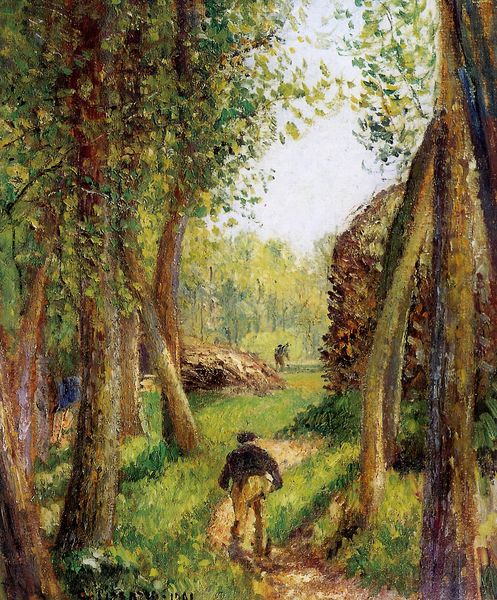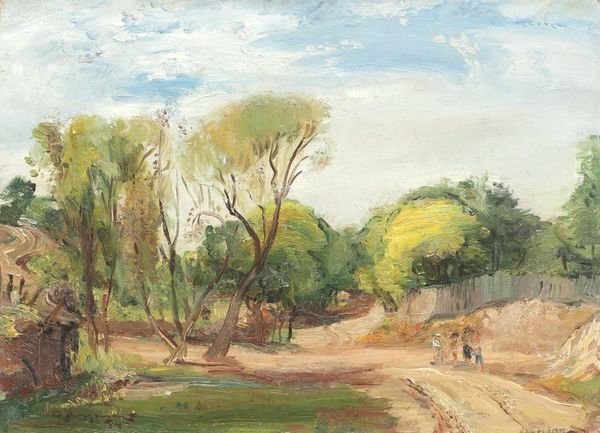
Dimensions: support: 610 x 660 mm
Copyright: © Tate | CC-BY-NC-ND 4.0 DEED, Photo: Tate
Editor: This is Duncan Grant's "The Hayrick," housed at the Tate. It gives off a very pastoral, impressionistic feel. What strikes you most about its composition? Curator: The interplay of light and form is particularly compelling. Consider how Grant uses brushstrokes to define the hayrick’s volume, contrasting the geometric solidity with the organic shapes of the surrounding trees. Editor: So, it’s the tension between the shapes that creates the interest? Curator: Precisely. The artist guides our eye through a carefully constructed space, where color and texture serve to articulate depth and spatial relationships. Note the chromatic scale, for instance. Editor: I see it now, the colors and textures really do lead the eye. Curator: Indeed. Studying Grant's technique provides a rich lesson in visual language. Editor: Absolutely. It’s amazing what you can learn by just looking closely.
Comments
Join the conversation
Join millions of artists and users on Artera today and experience the ultimate creative platform.
tate 7 months ago
⋮
In his youth Duncan Grant had been a leading avant-garde painter and designer, a key member of the Bloomsbury group and co-founder of the Omega workshops. He produced an enormous body of work in a variety of styles and subjects. This was painted in the rick-yard at Charleston, home of Grant and Vanessa Bell in Sussex. The hayrick is depicted as a tall, elegant but fragile structure, which harmonises with its natural environment. In the 1930s a number of societies were founded to oppose the destruction of the English countryside. During the war rural England became central to national identity, and threatened by aerial bombardment it became even more precious. Gallery label, September 2004
